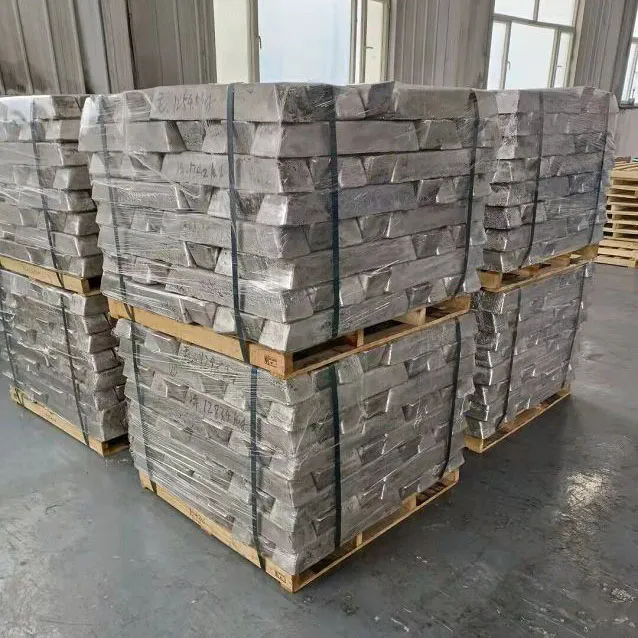Calcium Magnesium Alloys: Enhancing Material Properties for a Sustainable Future
2024-08-16
In the world of materials science and engineering, the search for alloys that offer improved performance and sustainability is a constant pursuit. Calcium magnesium alloys represent a significant advancement in this field, combining the benefits of calcium and magnesium to create materials with unique properties. These alloys have gained attention for their applications in various industries, from automotive to aerospace. In this blog, we will explore the characteristics, benefits, and applications of calcium magnesium alloys, as well as their role in advancing technology and sustainability.
1. What are Calcium Magnesium Alloys?
Calcium magnesium alloys are metallic compounds made primarily from magnesium and calcium. These alloys are created by combining magnesium with a small amount of calcium, typically ranging from 1% to 10%, depending on the desired properties. The addition of calcium to magnesium enhances the material’s performance in several ways, making it suitable for a range of industrial applications.
2. Key Properties of Calcium Magnesium Alloys
The unique combination of magnesium and calcium imparts several beneficial properties to these alloys:
- Enhanced Strength and Durability: Calcium magnesium alloys exhibit improved mechanical strength and durability compared to pure magnesium. The presence of calcium helps to refine the microstructure of the alloy, resulting in increased tensile strength and resistance to deformation.
- Improved Corrosion Resistance: Magnesium alloys are known for their susceptibility to corrosion, but the addition of calcium enhances their corrosion resistance. Calcium helps to stabilize the alloy and reduces the rate of oxidation, making it more suitable for use in challenging environments.
- Reduced Density: Magnesium is known for its low density, and when combined with calcium, the resulting alloy maintains this lightweight characteristic. This property is advantageous for applications where weight reduction is crucial, such as in the automotive and aerospace industries.
- Better Workability: The addition of calcium improves the workability of magnesium alloys, making them easier to machine, cast, and weld. This enhanced workability allows for more complex and precise manufacturing processes.
- Increased Heat Resistance: Calcium magnesium alloys have improved heat resistance compared to pure magnesium alloys. This makes them suitable for applications involving elevated temperatures or thermal cycling.
3. Benefits of Calcium Magnesium Alloys
Calcium magnesium alloys offer several benefits that make them a valuable choice for various applications:
- Lightweight Design: The low density of these alloys contributes to weight savings in products and components, which can lead to increased fuel efficiency and reduced energy consumption in transportation applications.
- Enhanced Performance: The improved strength, durability, and heat resistance of calcium magnesium alloys translate to better performance and longer service life for components made from these materials.
- Corrosion Resistance: The enhanced corrosion resistance of calcium magnesium alloys extends the lifespan of components and reduces the need for protective coatings or maintenance.
- Sustainability: By using calcium magnesium alloys, industries can contribute to more sustainable practices. The lightweight nature of these alloys helps to reduce overall material usage and energy consumption.
4. Applications of Calcium Magnesium Alloys
Calcium magnesium alloys find applications across various industries due to their advantageous properties:
- Automotive Industry: In automotive manufacturing, these alloys are used to produce lightweight components such as wheels, engine parts, and structural elements. The reduced weight of these parts can lead to improved fuel efficiency and reduced emissions.
- Aerospace Industry: The aerospace industry benefits from the use of calcium magnesium alloys in aircraft and spacecraft components. Their lightweight and high-strength characteristics contribute to better performance and efficiency in flight.
- Electronics Industry: Calcium magnesium alloys are used in the production of electronic devices and components, where their workability and corrosion resistance are advantageous for creating durable and reliable products.
- Construction Industry: In construction, these alloys are used for various structural applications, including frames, supports, and fittings. Their strength and durability make them suitable for demanding construction environments.
- Medical Devices: The biocompatibility of calcium magnesium alloys makes them suitable for certain medical applications, including implants and prosthetics.
5. Future Developments and Trends
The development and use of calcium magnesium alloys continue to evolve, with ongoing research focused on improving their properties and expanding their applications:
- Advanced Processing Techniques: Researchers are exploring new processing techniques to further enhance the performance of calcium magnesium alloys. Techniques such as advanced casting, heat treatment, and alloying processes are being investigated to optimize material properties.
- Sustainable Manufacturing: There is a growing emphasis on sustainable manufacturing practices in the production of calcium magnesium alloys. Efforts are being made to reduce the environmental impact of alloy production and promote the use of recycled materials.
- Innovative Applications: As technology advances, new and innovative applications for calcium magnesium alloys are being explored. From cutting-edge aerospace components to next-generation electronic devices, the potential for these alloys is vast and continues to expand.
6. Considerations and Challenges
While calcium magnesium alloys offer numerous benefits, there are also some considerations and challenges to be aware of:
- Cost: The cost of producing calcium magnesium alloys can be higher compared to other materials, which may impact their adoption in certain applications. However, the long-term benefits and performance improvements can outweigh the initial cost.
- Alloy Composition: The specific composition of the alloy can affect its properties. It is important to carefully control the ratios of magnesium and calcium to achieve the desired characteristics for a particular application.
- Manufacturing Expertise: The production of calcium magnesium alloys requires specialized knowledge and expertise. Manufacturers must ensure that they have the necessary skills and equipment to handle these alloys effectively.
In conclusion, calcium magnesium alloys represent a significant advancement in materials science, offering enhanced strength, durability, and corrosion resistance. Their lightweight nature and improved performance make them valuable in a wide range of applications, from automotive to aerospace and beyond. As research and development continue to advance, these alloys will play a crucial role in driving innovation and sustainability in various industries. Embrace the potential of calcium magnesium alloys and discover how they can contribute to a more efficient and sustainable future.



